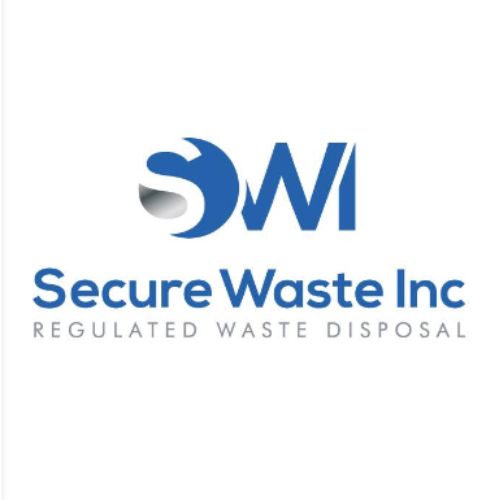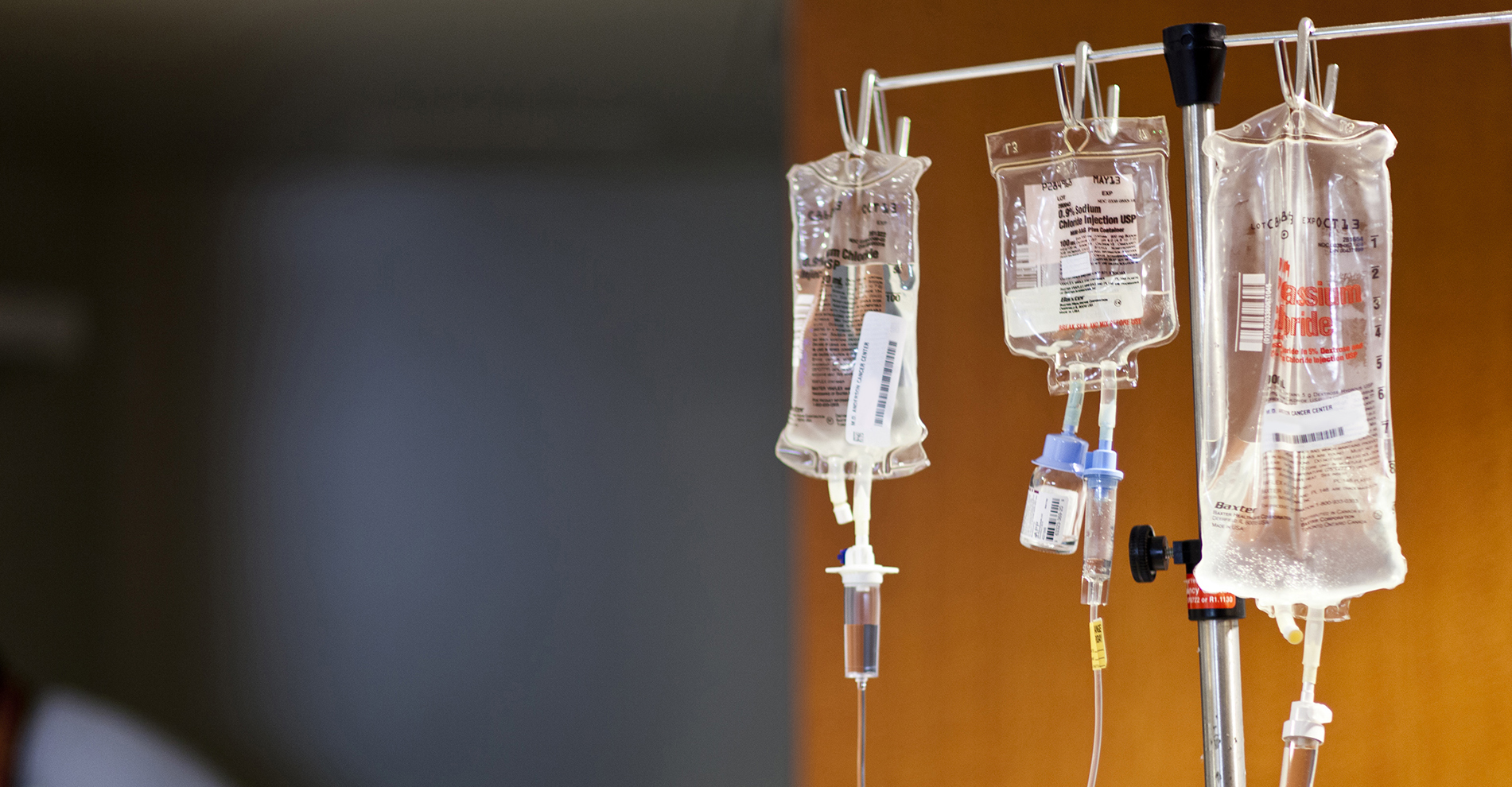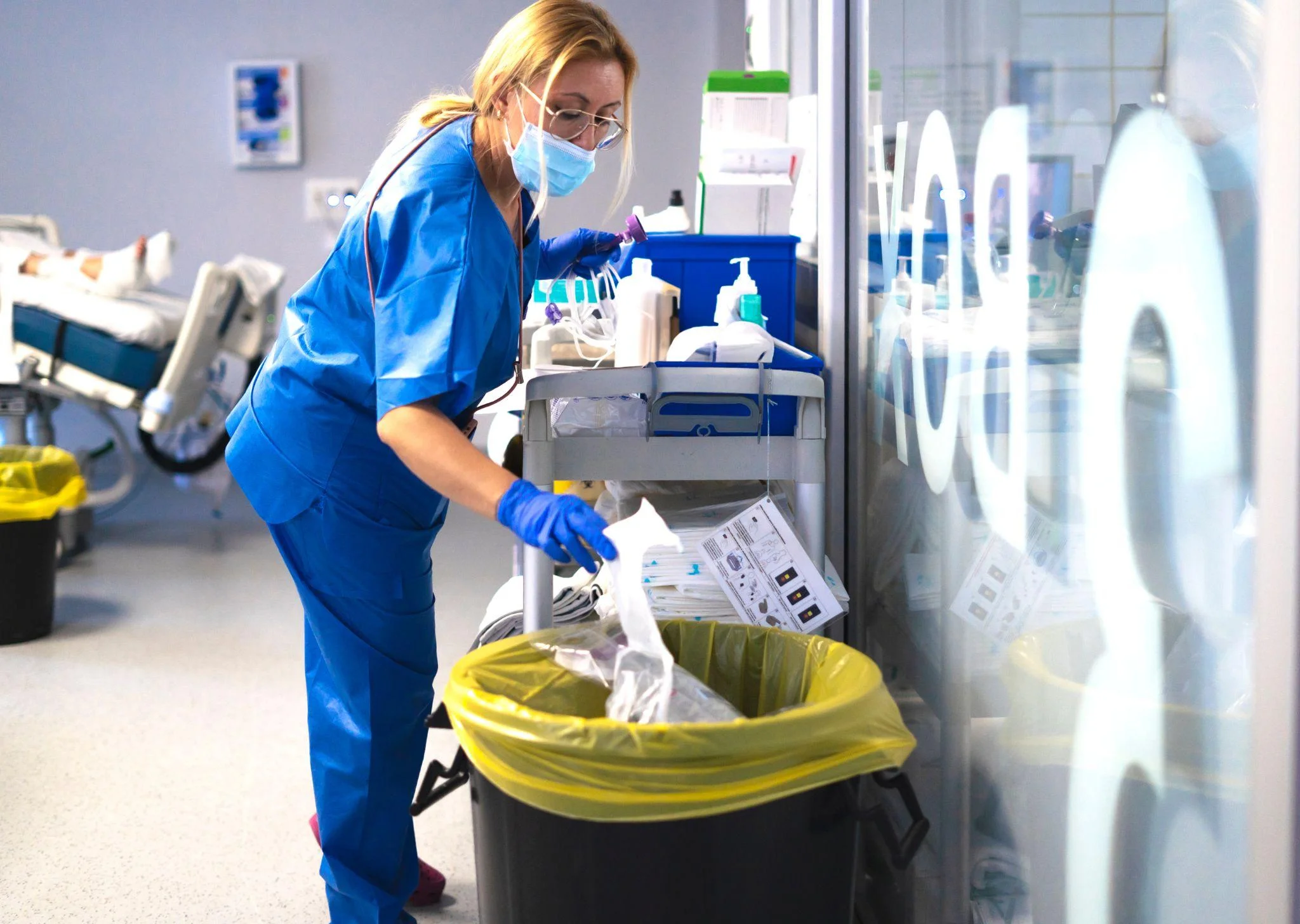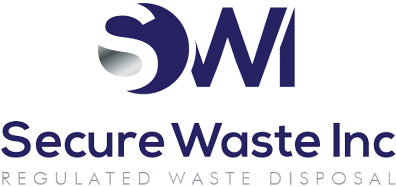How To Dispose Of Chemotherapy Waste Expert Solutions From Secure Waste
Unlike regular medical waste, chemotherapy waste requires specialized handling to protect staff, patients, and the environment from harmful exposure. Why? Because chemotherapy agents are cytotoxic, meaning they can harm or kill living cells, anything contaminated with them must be treated as hazardous waste. This includes unused or expired drugs, everyday items used in patient care such as syringes, IV bags, gloves, gowns, absorbent pads, and more. And facilities that generate this type of waste every day must understand how to dispose of it in the right way.
In the following sections, we’ll explore the different types of chemotherapy waste, the legal guidelines that regulate their handling, and other essential details every healthcare facility should know!
Chemotherapy Waste Types
Bulk Chemotherapy Waste
| Type of Waste | Explanation |
| Leftover or expired chemotherapy drugs | Highly potent drugs remain in vials or chemotherapy waste disposal containers. Require high-temperature incineration in specialized facilities to neutralize toxicity. Stored in sealed, rigid, labeled containers until disposal. |
| Cytotoxic drug waste | Includes unused or partially used cytotoxic drugs designed to kill fast-growing cells. Dangerous to release into the environment. Must be segregated from general pharma waste and incinerated under controlled conditions. |
| Contaminated IV bags and tubing | Infusion bags, tubing, and sets that retain residual drugs. Cannot be recycled as plastic due to cytotoxic traces. Collected in puncture-proof, color-coded containers to prevent leakage before chemotherapy waste disposal. |
| Spill waste | Generated from accidental spills during preparation or administration. It is managed using spill kits with absorbents and neutralizers. Waste is double-bagged, labeled, and routed through approved biohazard waste management channels. |
Trace Chemotherapy Waste
| Type of Waste | Explanation |
| Contaminated PPE (gloves, gowns, masks) | Carries small residues of cytotoxic drugs. Requires disposal in specially marked chemotherapy waste containers (often yellow or purple) to avoid mixing with regular biohazard PPE. |
| Contaminated sharps (needles, syringes, scalpels) | Pose risk of injury and chemical exposure. Must be discarded in puncture-resistant sharps containers specifically labeled for chemotherapy waste. |
| Contaminated materials & equipment | Items like spill pads, prep mats, or IV poles with minimal contamination. Sealed in designated chemo bags and sent to incineration under occupational and environmental safety guidelines. |
| Patient excreta & secretions | Urine, stool, vomit, or fluids excreted within 48–72 hrs after treatment. Handled using disposable pads, bedpans, or sealed bags. Some facilities use chemical toilets to prevent contamination of sewage. |
Legal Guidelines For Disposing of Chemotherapy Waste
Here are the chemotherapy waste disposal guidelines you need to follow to stay compliant and ensure safe handling at every stage:
Federal Guidelines
- Environmental Protection Agency (EPA) (RCRA 2019 Final Rule): Facilities must segregate RCRA (Resource Conservation and Recovery Act)-hazardous chemotherapy waste, store it in properly labeled containers, follow accumulation time limits (usually 90 days for large generators), and ensure it is sent only to a permitted treatment, storage, or disposal facility (TSDF).
- Occupational Safety and Health Administration (OSHA): Employers must use closed-system transfer devices, provide staff with chemo-rated gloves and gowns, ensure spill kits are accessible, and train workers regularly on hazardous drug handling.
- Department of Transportation (DOT)/Pipeline and Hazardous Materials Safety Administration (PHMSA): Waste leaving a facility must be packaged in UN-rated containers, labeled as hazardous, accompanied by a shipping manifest, and transported only by licensed hazardous materials carriers.
- Centers for Disease Control and Prevention (CDC)/National Institute for Occupational Safety and Health (NIOSH): Recommends double-bagging chemotherapy waste, using puncture-resistant sharps containers, routine surface contamination monitoring, and medical surveillance programs for exposed workers.
- The Food and Drug Administration (FDA) offers household disposal recommendations. While drug take-back is preferred, the FDA’s “flush list” identifies a limited number of medicines that may be flushed if no disposal options exist, though most chemotherapy drugs are not included.
State Guidelines
Federal agencies establish nationwide requirements, but each state may add its own rules for handling chemotherapy waste. In many cases, state rules are tougher than federal ones. This means healthcare waste management companies must always follow the stricter rules to stay compliant.
For example
- California’s Department of Toxic Substances Control (DTSC) has some of the most detailed pharmaceutical waste rules in the country. It requires facilities to separate RCRA-hazardous chemotherapy waste from non-RCRA pharmaceutical waste, with additional labeling and reporting obligations.
- In New York, the Department of Health and state environmental agencies regulate medical waste storage and transport, mandating strict handling procedures for sharps, chemotherapy residues, and returns to licensed vendors.
- Texas, through the Texas Commission on Environmental Quality (TCEQ), requires permits and recordkeeping for medical waste treatment, transfer, and transportation, which include chemotherapy by-products.
Other states may regulate storage limits, labeling colors, or disposal methods differently. Some require facilities to register as medical-waste generators, while others enforce additional staff training and reporting requirements. Because of this variation, hospitals, pharmacies, and clinics must consult their state’s environmental or public health agency to ensure compliance.
Segregating The Chemotherapy Waste
Let’s now look at how chemotherapy waste should be properly segregated before disposal:
- Identify the Waste Type: Separate chemotherapy waste into trace (small, empty, or nearly empty items) and bulk (partially used or non-empty drugs, spill cleanup materials) for correct handling.
- Select the Correct Container:
- Bulk waste is placed into rigid, leak-proof, and puncture-resistant containers, usually black or yellow and clearly labeled “Hazardous Chemotherapy Waste.”
- Trace waste is placed in specially designated containers, often yellow or purple, marked for “Trace Chemotherapy Waste.”
- Apply Proper Labeling: Containers must be clearly labeled at all times. Labels should include hazard warnings, waste type, and facility details to prevent accidental mixing or mishandling.
- Use Personal Protective Equipment (PPE): Staff handling chemotherapy waste must wear appropriate PPE, such as gloves, gowns, and eye protection, to prevent accidental exposure during segregation.
- Prevent Cross-Contamination: Waste should be segregated immediately at the site of use (pharmacy, patient room, or infusion center). General medical waste must never be mixed with chemotherapy waste.
- Secure Storage: Once containers are filled, they should be sealed and stored in a designated, secure area away from regular waste streams until transported for disposal.
- Training and Compliance: Staff should receive regular training on waste segregation, as compliance with OSHA, EPA, and state rules is essential for safety and legal protection.
Can I Dispose Of Trace Chemotherapy And Bulk Chemotherapy Waste In The Same Container?
As we also mentioned earlier, trace chemotherapy waste and bulk chemotherapy waste must never be placed in the same container. Keeping them separate is a strict safety and legal requirement for proper chemotherapy waste disposal. When these two waste streams are mixed, several problems arise such as different disposal needs since bulk waste requires high-temperature hazardous waste management incineration while trace waste does not, increased exposure risk because bulk waste carries stronger drug residues that can harm staff, regulatory violations that can result in fines and legal penalties, environmental dangers if higher drug concentrations leak into soil or water, and higher costs since all mixed waste must then be treated as bulk, which is more expensive.
Choose Secure Waste: Industry Leader In Chemotherapy Waste Collection
Secure Waste has been a trusted name in healthcare waste management since 2000, specializing in the safe collection and disposal of chemotherapy-related materials. Our services also include reliable biohazard waste pickup, ensuring contaminated items like PPE, sharps, and IV equipment are managed with precision. Every step of the process is carried out by a licensed, bonded, and insured team, giving you confidence that your chemotherapy waste is managed responsibly and in full compliance with safety regulations. Call us today at 877-633-7328 to schedule your service and ensure safe chemotherapy waste disposal management with us!

Expert Medical Waste Management: With over 25 years of industry experience, Secure Waste is a trusted local leader in hazardous and biohazardous waste disposal across Maryland, Virginia, and Washington, D.C. Specializing in medical waste management, sharps needle disposal, and biohazard waste removal, the company ensures full compliance with federal, state, and local regulations while prioritizing environmental sustainability.
The company also offers additional services, including secure document shredding and sharps container sales, providing comprehensive solutions for healthcare facilities and businesses. Our cost-effective services help clients maintain regulatory compliance without unexpected costs.
With a commitment to customer satisfaction, Secure Waste offers tailored waste management plans that align with industry best practices. Their team of experts provides reliable, timely, and compliant services, making them the preferred choice for medical waste disposal. For a free waste quote or more information, visit www.securewaste.net






